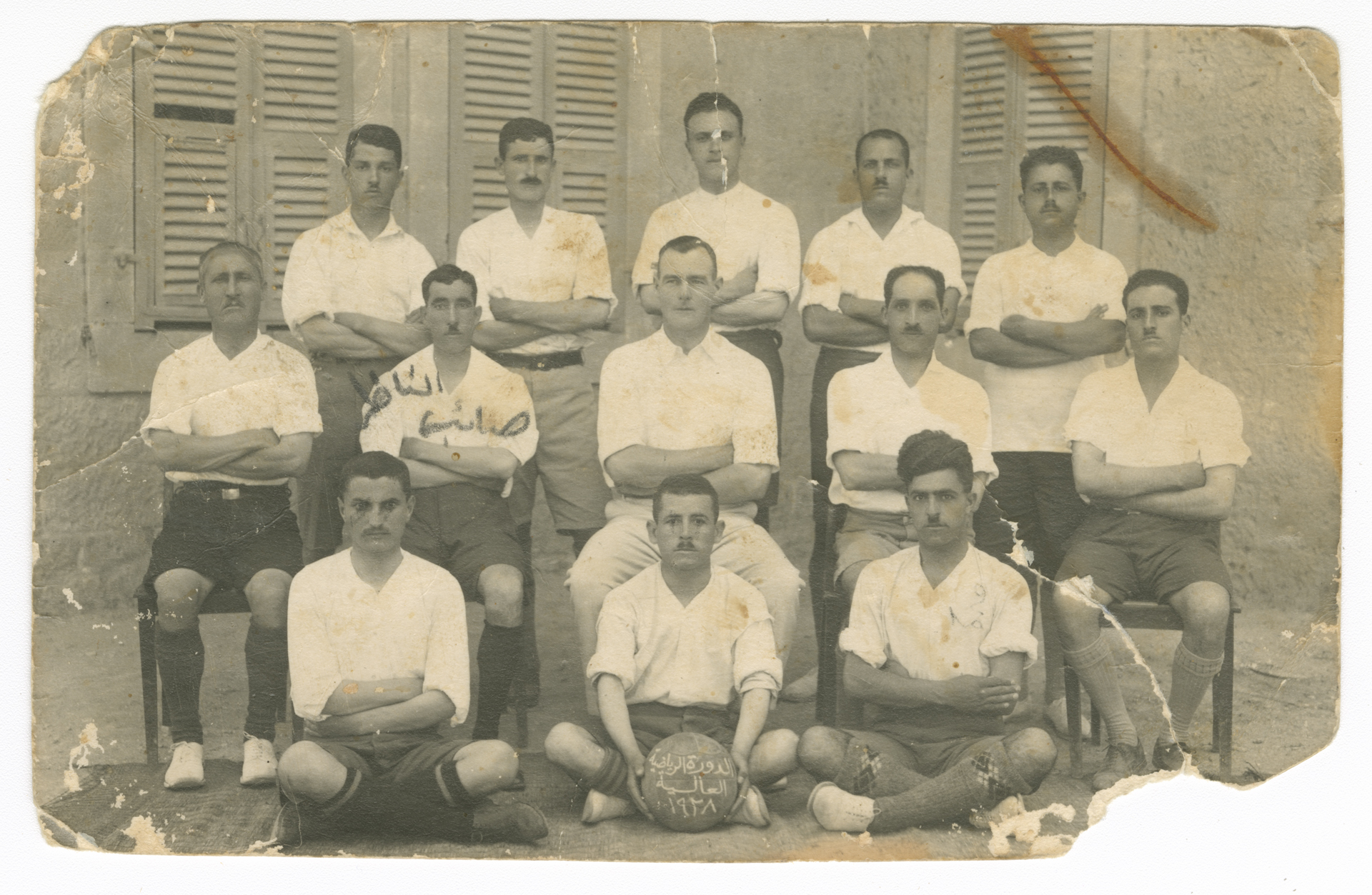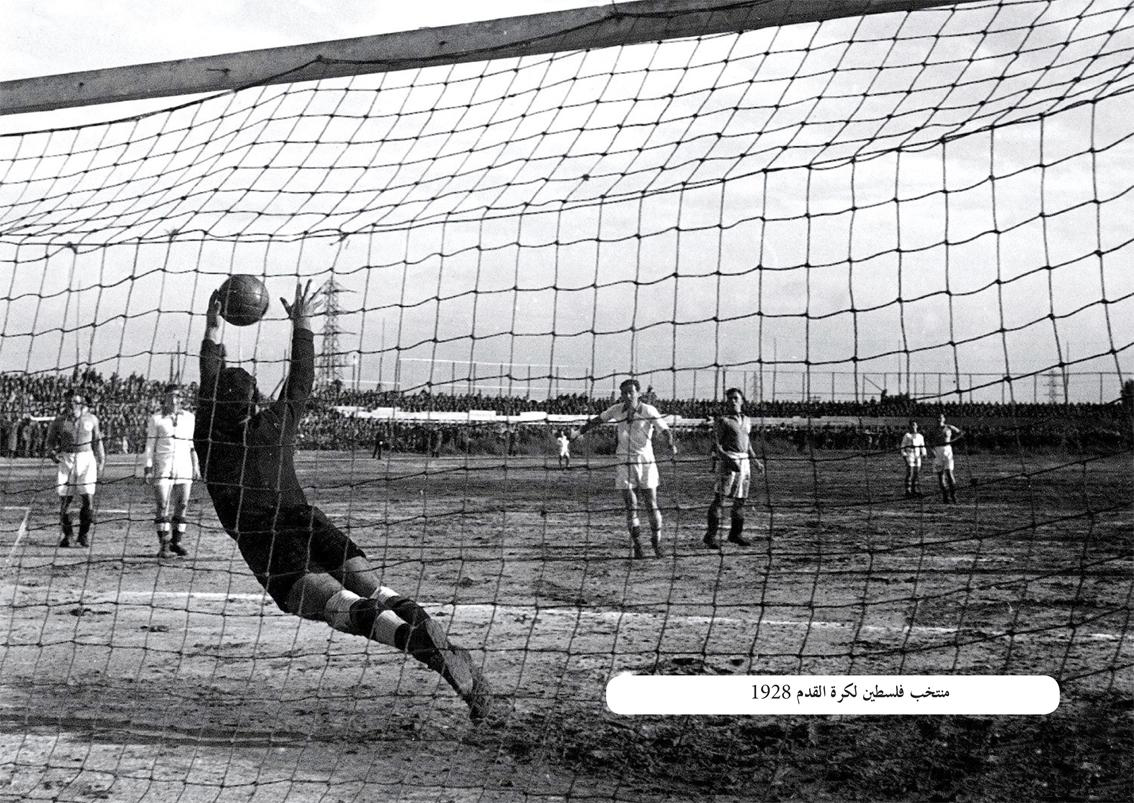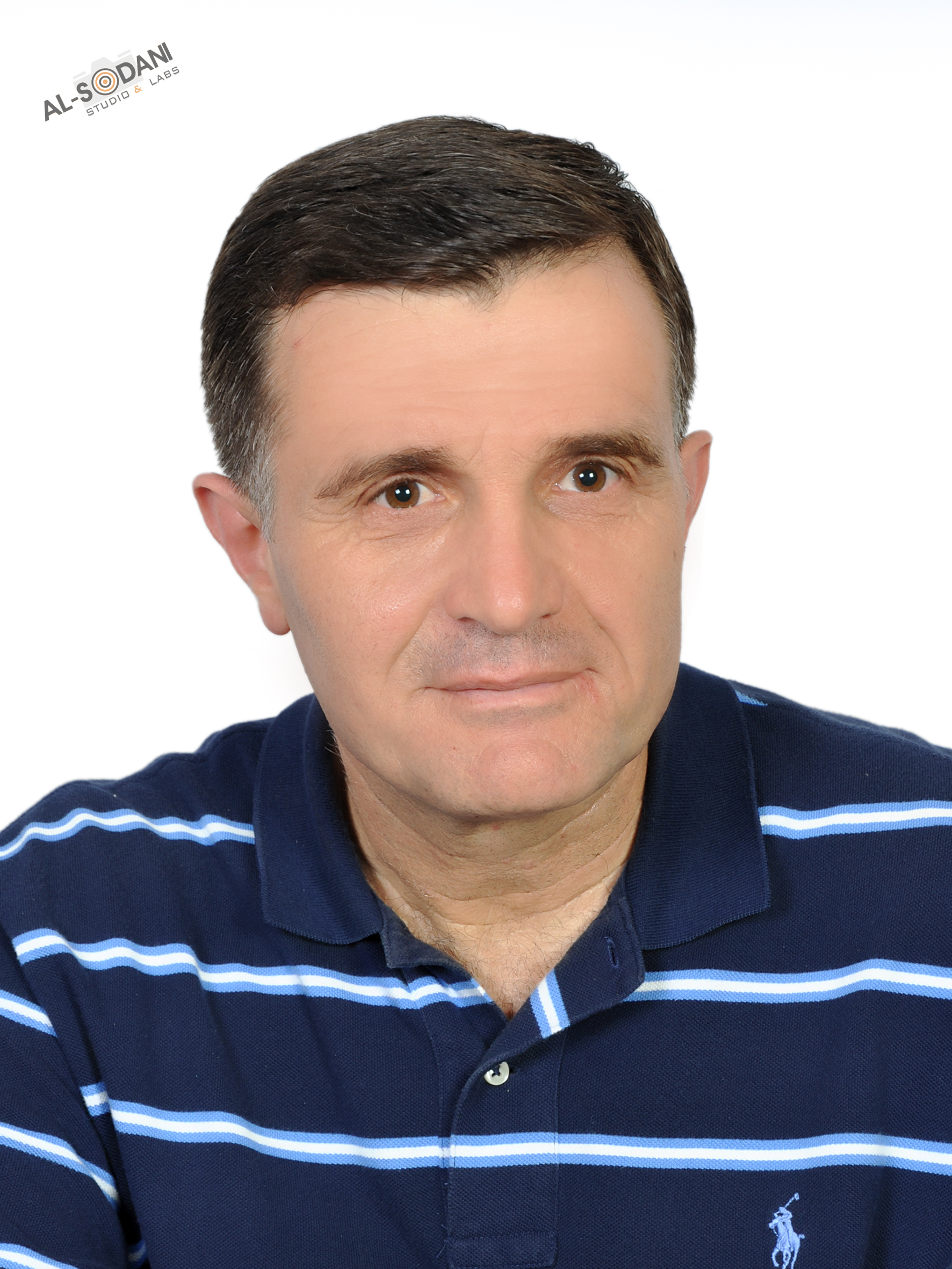Over the past decades, sports activities have reflected the details of various historical stages of the Palestinian reality. Prior to 1948, there were some 65 social athletic clubs in Palestine, approximately 55 of which were members of the Arab Palestine Sports Federation. These athletic teams provided a social, national, and institutional base for Palestine’s political organization in the first half of the twentieth century; they developed alongside and in response to Jewish immigration and the Arab-Zionist confrontation. Athletic clubs were important in evoking the Palestinian national consciousness, sustaining connections between villages and cities, and developing ties with groups across the Middle East and parts of Africa.
Palestine’s first football team was organized in 1908 at Jerusalem’s St. George School, and in 1909 defeated the American University of Beirut, whose team was considered one of the best in the region. The result was that one year later a group of young people inaugurated Palestine’s first “national” football team, which competed against missionary teams in Palestine.
After World War I, the number of Palestinian social clubs grew exponentially and included charitable societies, women’s groups, and young people’s organizations such as the Scouts. Their appearance reflected the growing advancement of nationalist sentiments in light of British Mandate and Zionist expansion. In the 1920s, most of these clubs assumed a civic/social character, incorporating athletic activities into their programs as sports began to be viewed as an element of social consciousness and nationalist culture. In Palestine at the start of the 1930s, Arab social athletic clubs numbered about 20.
In July 1923, a conference was held to protest what the Orthodox community perceived as the dominance of foreign churches in local spiritual leadership, and to advocate for balancing such control through the establishment of new societies and clubs throughout Palestine and Transjordan. Subsequently, Orthodox clubs that included athletic programs were established in Jaffa (1924), Jerusalem (1926), and Haifa (1937), as well as the Gaza Sports Club (1924); Jaffa’s Islamic Sports Club (1926); Haifa’s al-Nijma al-Baida (White Star), Salisi (Salesian), and Islamic Sports clubs (all founded in the 1920s); Jerusalem Arab Sports Club (1927), and Al-Rawda Club (1932).
Jaffa’s Orthodox Club was the first in Palestine to present boxing matches. As early as the 1920s, its members competed (and won) against renowned Jewish and British boxers. In August of 1933, the Club of Boxing and Sports was inaugurated as the first club dedicated entirely to boxing, under the presidency of the famed boxer Adeeb Kamal. In the late 1930s, regionally known boxer Adeeb al-Dasouqi and his coach Haqqi Mazin established the Olympic Institute in Jaffa, teaching boxing technique and preparing young people for competition. Al-Dasouqi himself frequently fought matches in Palestine, often against Jewish boxers. In September 1937, he represented Palestine against Syrian champion Mustafa al-Arnait; in August 1940, he tied Yuna, a famous Jewish champion; and in 1941, he was invited to Egypt where he defeated Egyptian fighter Abdo Kibrit.
The link between national pride and athleticism among Palestinians did not grow in isolation. The founders of Zionism also saw the emphasis that sports put on organizational unity and physical fitness as a tool for fulfilling their goal of a new society. In 1928, the Palestine Football Association (PFA) was established by a coalition of British, Arabs, and Jews. Over time, however, Jewish athletes invested great effort and, with the help of the British, managed to dominate this organization – which motivated local Muslims and Christians to establish the Arab Palestine Sports Federation (APSF, Al-Ittihad al-Riyadi al-Arabi al-Falastini) in April 1931.
Documents suggest that after the 1936 disturbances, the activities of the APSF became largely paralyzed, and as a result, a few Arab clubs joined the Jewish-dominated PFA – in cases where sporting goodwill overruled the increasingly charged political climate. But in 1943, Arab clubs withdrew from the PFA, and at a meeting held at the Islamic Sports Club in Jaffa in September 1944, the leaders of 35 clubs re-established the APSF. The group sent letters to Arab clubs in neighboring states to inform them that Palestine had registered an Arab athletic federation.
The APSF then faced the task of demonstrating that Palestine was home to an organized, quality Arab athletic league, ready to compete with English and international teams. In December 1944, the APSF organized the first football tournament between the regional clubs and soon began to challenge the Zionist league’s strategy of presenting itself as the sporting face of Palestine. Between 1934 and 1940, the PFA had officially represented Palestine five times in international tournaments. Thus, in 1945, the secretary of the APSF contacted the Egyptian Federation to protest the matches between the Alexandria team and Jewish teams in Palestine, initially in writing and then by sending its secretary to Egypt to negotiate this issue and coordinate future matches.
This sports diplomacy marked the beginning of a blizzard of matches between local Arab teams and clubs from the surrounding states. APSF teams held matches with the Jordan Athletic Club, the Nadi al-Sibaq Race Club in Beirut, a chosen team from the city of Aleppo (5,000 people attended the match where the Palestinian team won four to three), and a team from the National French Army. In January 1947, a Palestinian national team was chosen to challenge the British Army and Air Force teams in Palestine. But growing political tension eventually interfered with the numerous athletic competitions. The APSF coordinated a match between the Syrian and Palestinian national football teams for December 1947, to be followed by a competition between Lebanon and Palestine, but these matches never took place.
To facilitate its functions, the APSF had established six regional committees: Jaffa, Haifa, Jerusalem, Nablus, Gaza, and Galilee. Games were held in football, basketball, and volleyball; in tennis and table tennis; track and field; and cycling. Basketball was practiced among a few clubs such as the Anthony (Andoni) Club in Jaffa, the Salesian (Roman Catholic Salesian Congregation of St. John Bosco) Club in Haifa, and the YMCA in Jerusalem, and its competitions were held locally and with teams such as the Cairo YMCA and the Barada Club of Damascus.
The YMCA and Arab SC were the clubs that developed the sport of tennis. The brothers Hazem and Anwar Nusseibeh did very well in competitions with their Jewish counterparts, and Hazem was the champion at the American University of Beirut from 1941–1943. Women members of the YMCA also took part in these games, competing (and frequently winning) against British women. Table tennis, popular since the mid-1930s, became one of the main sports in the majority of Palestine’s Arab clubs and was practiced by men and women.
Track and field meets were organized as well, particularly in 1946 and 1947. In July 1947, the group managed to arrange an exhibition at Bassa Field in Jaffa in response to several preceding Jewish events on these grounds. The meet included 100-, 200-, and 400-meter dashes, 800- and 1,500-meter runs, a relay race, high jump and long jump, triple jump, discus throw, shot put, and pole-vault events. Biking was also under this committee’s purview, and on August 1, 1946, a cross-country bike race was organized on Al-Qastal Road between Jaffa and Jerusalem. Among the competitors were Egyptian rider Al-Houri (so well-known that the newspaper does not give his first name), Palestinian rider Mustafa Muhammad, and a British representative from the Palestinian police team.
Weightlifting became popular in Palestine in the 1940s, particularly in Jaffa and Haifa. Ali Talaba was the champion of Palestine and also a member of the Egyptian Weightlifting Federation and the International Weightlifting Federation.
Labor unions (such as the Jamiyat al-Umal al-Arabia in Haifa) were furthermore active in the APSF. Its members played football, boxed, and did well in wrestling and weightlifting. Government-sector employees represented most departments, whereas private-sector workers represented companies such as Shell, Iraqi Petroleum, and Barclays Bank.
Schools played a major role in the advancement of organized sports in Palestine – even though education officials did not emphasize physical education programs in schools – as most institutions had competitive football teams. Palestine’s 85,000 students could not be taught by the single physical education specialist available at the time, and most schools had no physical education curriculum. Some schools offered an alumni league; other school districts held annual athletic tournaments in May and June, but most of these events were held under the auspices of the British authorities in Palestine.
Scouts organizations also had football teams and biked for exercise and entertainment. Some of these scout troops were members in the APSF during both its periods of existence. In August 1945, the leaders of the social-athletic clubs and Arab societies decided to form the Arab Scouts Association (Jama’ait al-Kashaf al-Arabia), which included most Arab Scout organizations in the country. It was no coincidence that this umbrella organization was created at the time of the re-establishment of the APSF.

In the rivalries between PFA and APSF, the main conflict over which sports federation had the right to represent Palestine abroad was brought before the Fédération Internationale de Football Association (FIFA). The Jewish-controlled PFA had played five international matches representing Palestine, when the Arab-dominated APSF sought to challenge their right to do so. A memorandum sent to FIFA by the APSF briefly explained the nature of the conflict with increasing Jewish immigration and settlement in Palestine. While expressing appreciation for FIFA’s persistence in seeking a solution for the athletic problem in Palestine, the APSF suggested that Palestine be represented by two federations, one Arab and one Jewish. “Simply we could say,” the group wrote, “that the members of your federation will not succeed in achieving what the British administration could not do.”
When the issue was discussed at an international FIFA conference in Luxemburg in August 1946, only a representative of the PFA was invited to speak. He asserted that his association was democratic, with a Jewish majority, furthermore claiming that increased membership of Arab clubs would prove the group’s democratic intent, that the number of Arab clubs in Palestine did not exceed four or five, and that this was in fact representative of athletic inferiority – proposing that the application be rejected. Despite support from the Lebanese delegation, FIFA members opposed the entry of another league in Palestine, and the motion was rejected. The Syrian Sport Federation’s subsequent proposal to include the APSF under its umbrella was rejected as well – a fact that reflected the bias in FIFA towards the PFA, weakness of Arab support for such initiatives, and the Zionist movement’s ability to organize to achieve its goals.

And indeed, sports club and Scouts members often volunteered for political duties: attending demonstrations against the British, helping to transport dead or wounded, and manning Palestine’s beaches to prevent Zionist smuggling and immigration. During the 1936 general strike, these clubs organized food distribution and protest activities. Club members saw themselves as augmenting the role of the authorities when it was failing them.
No history of Palestinian athletics would be complete without mention of the unique role of those athletes, club leaders, and activists who dedicated their efforts and time to promoting sports in Palestine. Among them the secretary of APSF Abdel Rahman al Habbab; the referees, teachers, and activists Ispiro Iqdis, Ibrahim Nusseibeh, Fahed Abdel Fattah, Rock Farraj, Livon Kishishian, and many others; not to mention the editor of the sports column in Al-Difa’, Khair Eddin Abu al-Jibin, and Hussein Husni, who came to Palestine from Egypt and taught physical education in various schools. He also took part in editing the sports column at Filastin, enriching it with his critical, meaningful, and motivational writings.
Had the Palestinian people not been driven out by the 1948 Nakba (catastrophe), the period 1944–1947 could have constituted a strong foundation for current Palestinian sports. The Nakba was an almost fatal blow for Palestinian sports, causing the destruction of sports infrastructure and the dispersion of cadre and athletes. However, Palestinian sports had the capacity to recover quickly from difficulties, and this resilience was due to previous experiences and the severity of the dispersion and dispossession.
Issam Khalidi, an independent scholar who lives in San Francisco, California, is author of History of Sports in Palestine 1900–1948, in Arabic, and One Hundred Years of Football in Palestine, in Arabic and English, as well as various articles on the subject that can be found at www.hpalestinesports.net.


